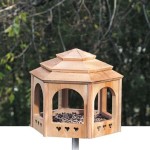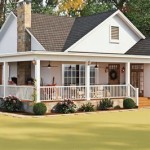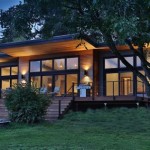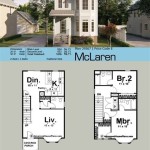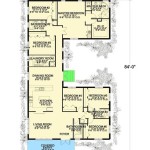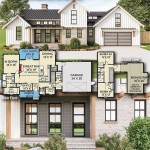Camp House Plans: A Guide for Building the Perfect Retreat
Planning a camp house is an exciting undertaking, promising a haven for relaxation and adventure. Before diving into construction, careful consideration of design and functionality is crucial. Camp house plans serve as blueprints for this dream, outlining the layout, dimensions, and architectural aesthetics of your retreat. Whether you envision a cozy cabin or a spacious lodge, understanding the essentials of camp house plans ensures a successful project.
1. Define Your Needs and Purpose
The first step in crafting the perfect camp house plan is to define its purpose and your needs. Consider how you intend to use the space. Is it primarily for weekend getaways, extended vacations, or a permanent residence? Will it accommodate a large family or just a few individuals? The answers to these questions will guide the design process.
For instance, a weekend retreat might prioritize a cozy living space and a well-equipped kitchen, while a family vacation home might require multiple bedrooms and a spacious outdoor area for activities. A permanent residence will need to consider year-round functionality with features like insulation and heating.
2. Location and Site Assessment
The location of your camp house will significantly influence its design. Factors like terrain, accessibility, and surrounding vegetation need to be carefully assessed. A steep slope might necessitate a foundation design that minimizes erosion, while a wooded area might inspire a plan incorporating large windows for natural light and views.
Site assessments often involve analyzing soil conditions, determining the availability of utilities, and identifying potential hazards like flood zones or wildlife. These considerations will inform the design of the foundation, water and sewage systems, and overall safety measures.
3. Design Considerations
Camp house plans encompass a wide range of design elements that impact functionality and aesthetics. Key considerations include:
a) Layout and Space Flow
The layout of your camp house should prioritize functionality and convenience. Consider the flow of traffic through the space, the placement of essential rooms, and the overall sense of openness or intimacy. Open floor plans can create a sense of spaciousness, while separate rooms might be more conducive to privacy and quiet.
b) Materials and Sustainability
Choosing suitable materials is crucial for both functionality and sustainability. Camp houses often incorporate natural materials like wood and stone, which blend harmoniously with the environment and offer durability. Consider the impact of your choices, opting for recycled or sustainable materials whenever possible.
c) Energy Efficiency
Camp houses can embrace energy efficiency through design choices that minimize energy consumption. Proper insulation, high-performance windows, and solar panels can significantly reduce energy bills and environmental impact. Prioritizing natural ventilation for cooling and passive solar design strategies are also valuable considerations.
4. Seek Professional Expertise
While it is possible to create basic camp house plans on your own, seeking professional expertise can greatly enhance the process. Architects and designers bring specialized knowledge of building codes, site analysis, and aesthetic principles. They can translate your vision into functional and visually appealing plans, ensuring compliance with regulations and maximizing the use of available space.
5. Camp House Plan Options
There are numerous resources available for camp house plans, ranging from online databases to specialized design firms. You can find pre-designed plans tailored to specific needs, or work with a professional to create a custom design. Consider factors like:
a) Simplicity vs. Complexity
Simple designs often prioritize functionality and affordability, using straightforward shapes and layouts. Complex plans may incorporate intricate details, multiple levels, or unconventional layouts. Choose a plan that aligns with your budget, skills, and desired level of customization.
b) Budget and Timeline
Camp house plans vary in cost and complexity, influencing the overall budget and timeline for construction. Factor in the price of materials, labor costs, and potential permits to create a realistic budget and schedule.
c) Functionality and Aesthetics
Balance functionality with aesthetics when selecting a camp house plan. Prioritize features that meet your needs while considering architectural styles, window placement, and exterior details that enhance the overall appeal.
6. Review and Refine
Once you have chosen a plan, it is crucial to review and refine it before construction begins. Consult with contractors or engineers to ensure the plan is feasible, meets local codes, and considers site-specific factors.
Take the time to carefully consider the details, making adjustments as needed to optimize the design and create a camp house that perfectly matches your vision and fulfills its purpose.

13 Best Small Cabin Plans With Cost To Build Tiny Simple

Small Cabins A Guide To Building 2024 Field Mag

Elevated Camp House Murdough Design Architects Archdaily

A Frame House Plans Everything You Need To Know Field Mag

A Frame House Plans Everything You Need To Know Field Mag

How To Build A Diy Cabin In 55 Days For 13k Field Mag

A Frame House Plans Everything You Need To Know Field Mag

How To Plan A Team Building Retreat The Complete Guide
:max_bytes(150000):strip_icc()/katrina-w1024-houseplans-574c8fa35f9b5851655b93b0.jpg?strip=all)
9 Books For Building Cozy Affordable Cottages

What Does It Take To Build A Disaster Proof House The New York Times
Related Posts

